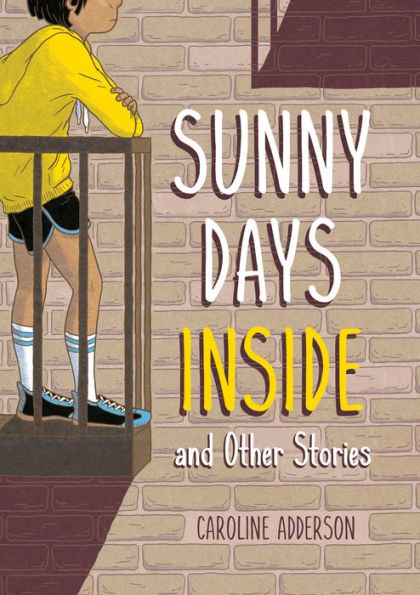When the “grownup virus” hits, kids who live in the same apartment building must cope with strange new rules and extended time at home with parents and siblings.
And they survive brilliantly, each in their own way. Twin boys throw themselves into an independent research assignment on prehistoric people and embrace their own devolution. A budding track star is encouraged to run laps on his balcony by a neighbor who has a secret crush on him. A classroom troublemaker reaches out to a teacher when his own father begins to exhibit signs of mental illness. A young entrepreneur saves himself and his hairdresser mother from financial collapse by renting out the family dog. And a girl finds a way to communicate with her hearing-impaired neighbor so that they can spy on the rest of the building.
The stories follow the course of the pandemic, from the early measures through lockdown, as the kids in the building observe the stresses on the adults around them and use their own quirky kid ingenuity to come up with ways to make their lives better. Funny, poignant and wise, this book will long outlive even the pandemic.
Correlates to the Common Core State Standards in English Language Arts:
CCSS.ELA-LITERACY.RL.4.3
Describe in depth a character, setting, or event in a story or drama, drawing on specific details in the text (e.g., a character's thoughts, words, or actions).
CCSS.ELA-LITERACY.RL.4.6
Compare and contrast the point of view from which different stories are narrated, including the difference between first- and third-person narrations.
CCSS.ELA-LITERACY.RL.5.3
Compare and contrast two or more characters, settings, or events in a story or drama, drawing on specific details in the text (e.g., how characters interact).
CCSS.ELA-LITERACY.RL.5.5
Explain how a series of chapters, scenes, or stanzas fits together to provide the overall structure of a particular story, drama, or poem.
CCSS.ELA-LITERACY.RL.5.6
Describe how a narrator's or speaker's point of view influences how events are described.
CCSS.ELA-LITERACY.RL.6.3
Describe how a particular story's or drama's plot unfolds in a series of episodes as well as how the characters respond or change as the plot moves toward a resolution.
CCSS.ELA-LITERACY.RL.6.5
Analyze how a particular sentence, chapter, scene, or stanza fits into the overall structure of a text and contributes to the development of the theme, setting, or plot.
CCSS.ELA-LITERACY.RL.6.6
Explain how an author develops the point of view of the narrator or speaker in a text.
When the “grownup virus” hits, kids who live in the same apartment building must cope with strange new rules and extended time at home with parents and siblings.
And they survive brilliantly, each in their own way. Twin boys throw themselves into an independent research assignment on prehistoric people and embrace their own devolution. A budding track star is encouraged to run laps on his balcony by a neighbor who has a secret crush on him. A classroom troublemaker reaches out to a teacher when his own father begins to exhibit signs of mental illness. A young entrepreneur saves himself and his hairdresser mother from financial collapse by renting out the family dog. And a girl finds a way to communicate with her hearing-impaired neighbor so that they can spy on the rest of the building.
The stories follow the course of the pandemic, from the early measures through lockdown, as the kids in the building observe the stresses on the adults around them and use their own quirky kid ingenuity to come up with ways to make their lives better. Funny, poignant and wise, this book will long outlive even the pandemic.
Correlates to the Common Core State Standards in English Language Arts:
CCSS.ELA-LITERACY.RL.4.3
Describe in depth a character, setting, or event in a story or drama, drawing on specific details in the text (e.g., a character's thoughts, words, or actions).
CCSS.ELA-LITERACY.RL.4.6
Compare and contrast the point of view from which different stories are narrated, including the difference between first- and third-person narrations.
CCSS.ELA-LITERACY.RL.5.3
Compare and contrast two or more characters, settings, or events in a story or drama, drawing on specific details in the text (e.g., how characters interact).
CCSS.ELA-LITERACY.RL.5.5
Explain how a series of chapters, scenes, or stanzas fits together to provide the overall structure of a particular story, drama, or poem.
CCSS.ELA-LITERACY.RL.5.6
Describe how a narrator's or speaker's point of view influences how events are described.
CCSS.ELA-LITERACY.RL.6.3
Describe how a particular story's or drama's plot unfolds in a series of episodes as well as how the characters respond or change as the plot moves toward a resolution.
CCSS.ELA-LITERACY.RL.6.5
Analyze how a particular sentence, chapter, scene, or stanza fits into the overall structure of a text and contributes to the development of the theme, setting, or plot.
CCSS.ELA-LITERACY.RL.6.6
Explain how an author develops the point of view of the narrator or speaker in a text.

Sunny Days Inside: and Other Stories

Sunny Days Inside: and Other Stories
Related collections and offers

Product Details
| ISBN-13: | 9781773065731 |
|---|---|
| Publisher: | Groundwood Books Ltd |
| Publication date: | 08/01/2021 |
| Sold by: | Barnes & Noble |
| Format: | eBook |
| Lexile: | 710L (what's this?) |
| File size: | 2 MB |
| Age Range: | 9 - 12 Years |
